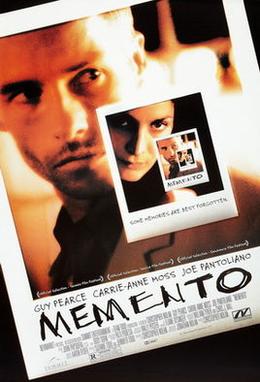One widely accepted narrative theory structures was
constructed by Tzvetan Todorov. Todorov was an author and literary theorist;
having studied Russian folklore he got to the point where he was able to
generalise the development of the plot within the story. This was where he
created his narrative theory.
 Todorov
had conclude that every story would begin with equilibrium, this would be where
people are assumed to be happy and going about their everyday lives. After
establishing the equilibrium at the beginning of the story a disruption of said
equilibrium is implemented, the details of this disruption will clearly vary
depending on the plot. Soon the characters will recognise this disruption and
possibly do so by outright experiencing it. After recognising the disruption an
attempt to resolve the issue should be executed by the characters which would
eventually result in a new equilibrium.
Todorov
had conclude that every story would begin with equilibrium, this would be where
people are assumed to be happy and going about their everyday lives. After
establishing the equilibrium at the beginning of the story a disruption of said
equilibrium is implemented, the details of this disruption will clearly vary
depending on the plot. Soon the characters will recognise this disruption and
possibly do so by outright experiencing it. After recognising the disruption an
attempt to resolve the issue should be executed by the characters which would
eventually result in a new equilibrium.
This theory is widely accepted as it is simple to understand
meaning that to many it would make sense and as a result be applied to most
plots whether they are a piece of literature, film or even video game.
However, this theory can’t always be applied to every plot
sequence. Todorov’s studies that led to his theory were based around Old
Russian folk stories whose narrative structure would be intended to be
unsophisticated in order to be passed on the story. Due to his study being on
older folk stories it would also be more difficult to apply it to some modern
pieces of storytelling as it has become more sophisticated over time. Whilst
creating the theory Todorov was thinking more in terms of literature as opposed
to film which would limit the extent to which the theory can be generalised to.
As a result of this theory some filmmakers have tried to
manipulate our understanding of narrative through their films by creating a
multi-stranded or non-linear story arc.
 An example of a non-linear narrative would be the film
Memento. In this film all the scenes are played out in reverse-chronological
order and creates the same confusion and lack of understanding of the plot and
characters as the lead, who is unable to create any new memories. However, as
the story goes on and we begin to see the start of the plot towards the end of
the film the audiences begins to understand. Hints to what the narrative could
be are shown in the opening sequence of the film where the lead character
shoots a man; the entire sequence, however, is set in reverse as a clue towards
the narrative of the film.
An example of a non-linear narrative would be the film
Memento. In this film all the scenes are played out in reverse-chronological
order and creates the same confusion and lack of understanding of the plot and
characters as the lead, who is unable to create any new memories. However, as
the story goes on and we begin to see the start of the plot towards the end of
the film the audiences begins to understand. Hints to what the narrative could
be are shown in the opening sequence of the film where the lead character
shoots a man; the entire sequence, however, is set in reverse as a clue towards
the narrative of the film. An example of a film with a multi-stranded story arc is the film Love Actually. The narrative of this film is compiled with separate love stories that all take place around Christmas. As the focus jumps round from one story line to another it provides the ability to contain a larger amount of characters, personalities and events to take place without compromising the sense of realism within the story.
No comments:
Post a Comment